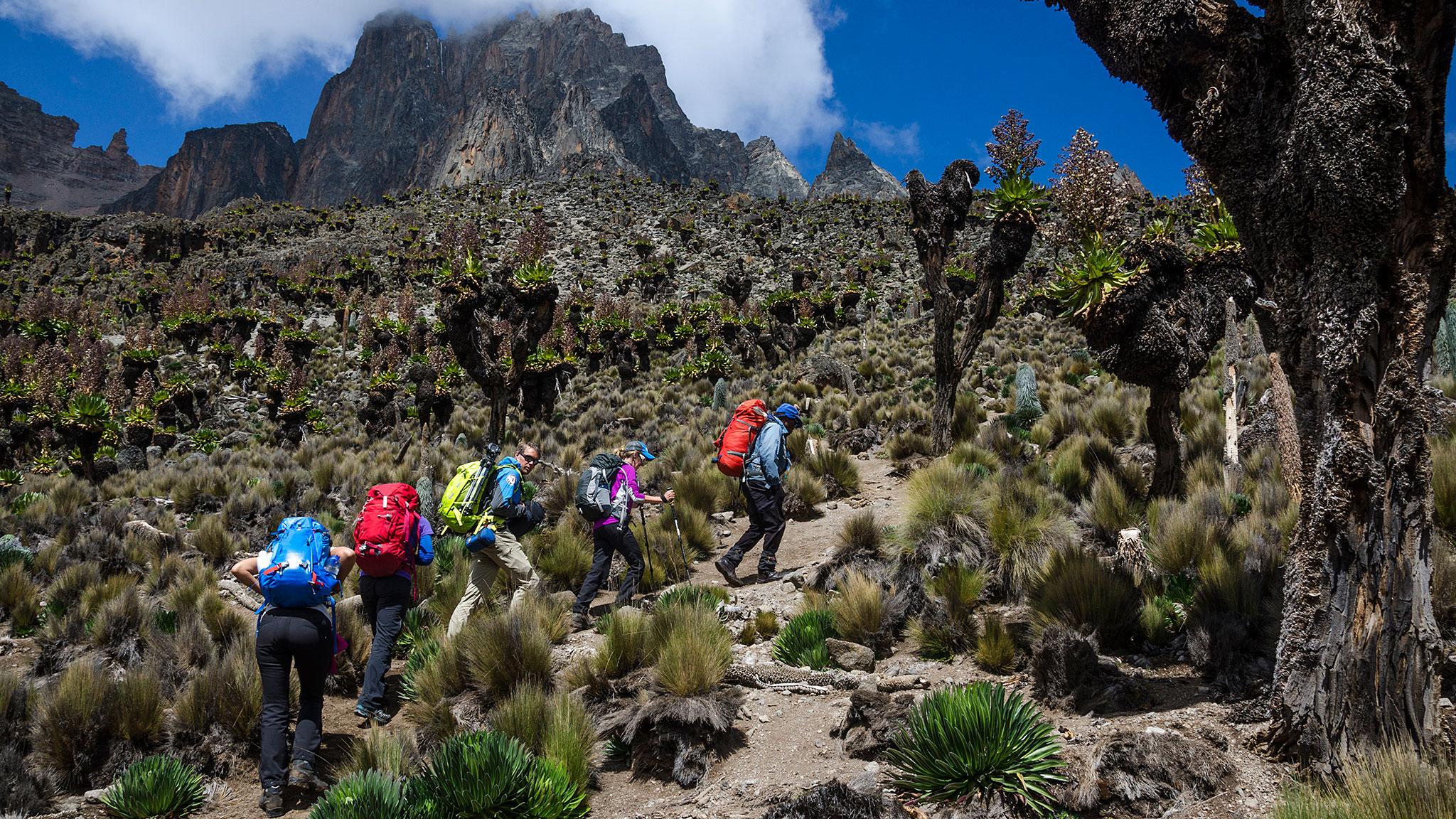Best Time to Visit Mount Kenya
Best time to Visit Mount Kenya. While the rainy season is mostly during April, May & November, the best time for Climbing Mount Kenya is between January-March & June-October, yet point Lenana, Batian and Nelion peaks can be trekked/hiked during anytime of the year (all year round).
The best time to climb or trek or hike Batian peak, Nelion peak and Lenana peaks of Mount Kenya from all the routes are January, February, March, June, July and October, although it can be climbed all year round, due to the unpredictable climate change yet April, May and November have been months of rain.

When we think about climbing Mount Kenya! “What is the best month to climb Mount Kenya?” is always the first question.
However, Climbing Mount Kenya is an all year round activity, given the unpredictable weather changes. The main routes are more crowded during the months of January, February, march, June and October, yet heavy rains naturally occur during the months of April, May and November. But if you prefer total solitude, then try early March, to avoid very heavy rain down pour between mid March to Mid-June and late October to the half of December. Mount Kenya experiences the highest rain volumes in the Forest belt & on the south-east side of the mountain where it reaches 2500mm. each year.
What is the best month to visit Mount Kenya?(Month By Month Routes)
The best time to climb Mount Kenya depends on whether you want isolation or clear weather. Normally the months March, April, May, October and December are characterized by higher amounts of rains received in Mount Kenya area, which results to muddy and slippery trails, while January, February, August and September are the most popular months for climbing Mount Kenya.
Climbing routes to the Technical peaks of Batian and Nelion, rely mostly on the weather conditions, compared to the casual hiking route. This then calls for seeking thorough information on the climbing route you may have chosen to climb.
The route on the South Ridge to Nelion peak can only be used between December and March, while the normal “ North face route” to Batian is best utilized in July, August and September.
The temperatures on Mount Kenya vary annually, but change consequently upon ascent, with day temperatures varying between 15°C to 5°C while night temperatures drop below freezing, and frosts are likely to be encountered. The weather is always best experienced in the mornings, while the convectional rainfall, if any, usually falls in the mid-afternoon.
However, the drier seasons are accompanied with clear, dry weather which can last for a number of days.